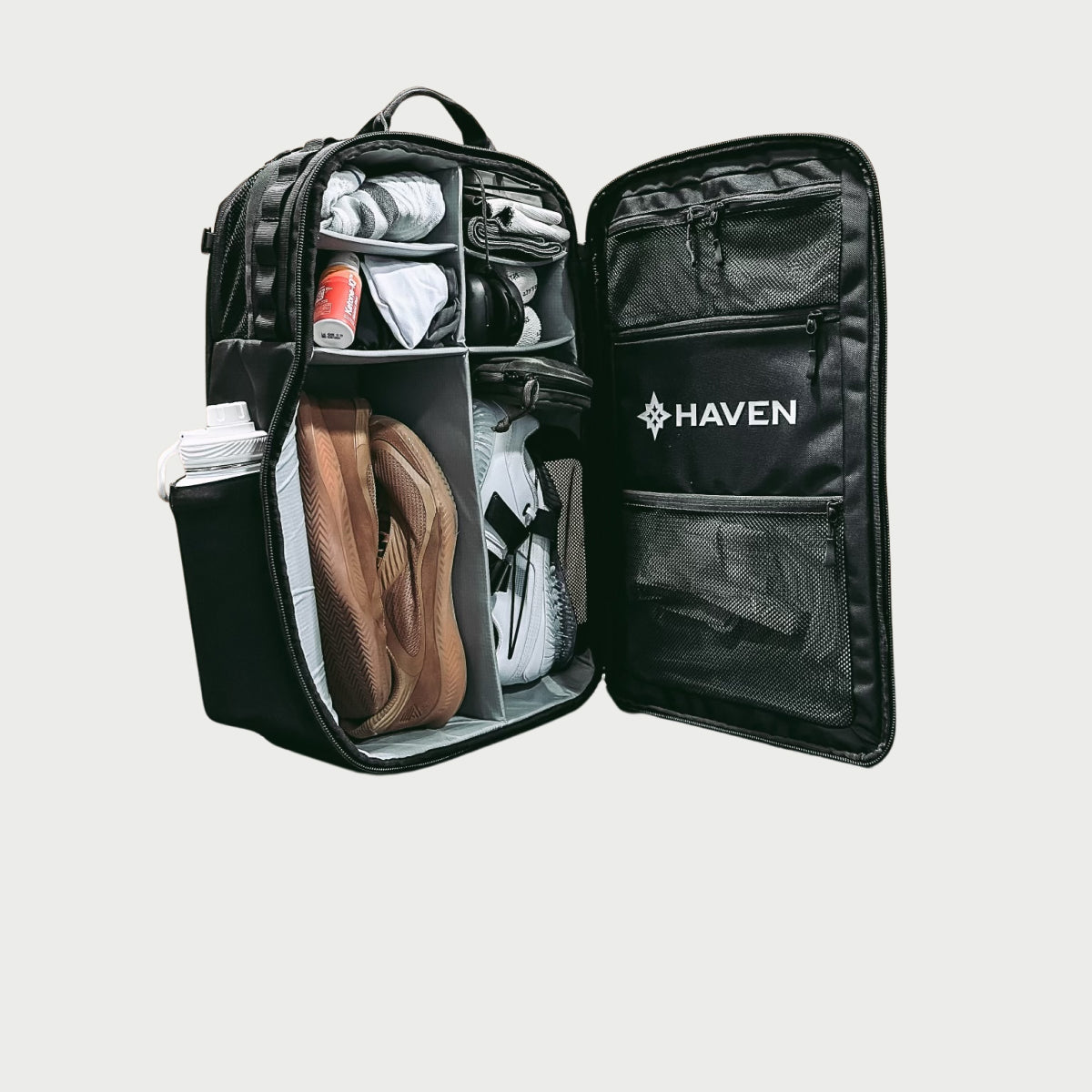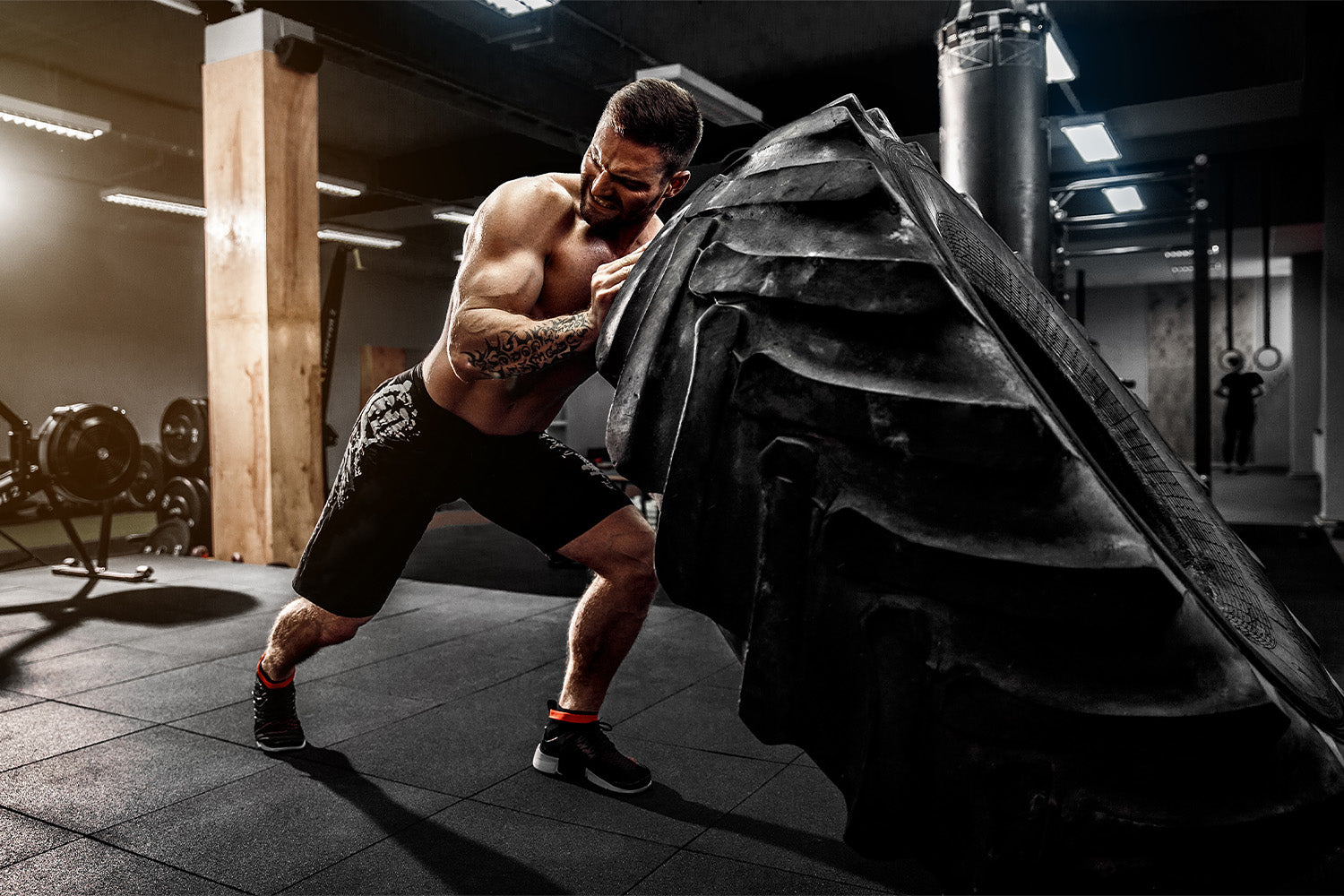Muscle-ups are very complex movements that require ample training and technique. This advanced movement requires upper body strength, coordination, and core stability.
Competitive fitness athletes seek to master the muscle-up and its different variations, such as the ring muscle-up. Muscle-ups help fitness athletes improve performance in competitive WODs and other fitness competitions.
In this article, we will talk about what muscle-ups are, exercises to do to work your way up to a muscle-up, and how to complete this advanced movement.
What Are Muscle-Ups?
Muscle-ups, also known as bar muscle-ups or strict muscle-ups, are an advanced strength training exercise, within the domain of calisthenics and are very popular amongst CrossFit athletes. The movement is a combination of radial pull-ups followed by a dip.
Muscle-ups can be done in different variations such as on the rings and on the pull-up bar.
What Muscle Groups Do Muscle-Ups Engage?
Muscle-ups require a lot of upper body strength and are dependent on multiple muscles including:
- Latissimus Dorsi, also known as your lats
- Deltoids
- Biceps
- Triceps
- Trapezius
- Pectorals
One big misconception about muscle-ups is that it only requires upper body strength. When in fact, core strength is crucial when it comes to mastering muscle-ups. Your core stability is the main component when it comes to getting your body over the top of the bar.
Do You Need Equipment for Muscle-Ups?
Muscle-ups themselves do not require a bunch of equipment. All you need is a pull-up bar or a set of gymnastic rings. However, when preparing for muscle-ups, there are many different types of equipment you can use to help work your way up to a full muscle-up.
Resistance bands are a good piece of equipment to utilize when practicing for muscle-ups. By utilizing resistance bands you can work your lats by doing banded latpulldowns, or you can use the resistance bands as added momentum to help complete the muscle up movement.
Are Muscle-Ups a Good Beginner Exercise?
Muscle-ups are very complex gymnastic movements and are considered advanced. If you are a beginner in the fitness world it is best to stick to back strength training exercises that will help you work your way up to a muscle-up.
In order to complete a muscle-up, you should have the strength to be able to complete pull-ups and kipping pull-ups for multiple repetitions. Some venture to say that you should be able to do strict muscle-ups before adding in kipping to ensure you don’t injure yourself.
As always, if muscle-ups are an exercise you wish to accomplish in your future workout routines, then be sure to follow a muscle-up progression under close supervision. This movement should be built up by breaking down and learning each portion of the movement.
How Do You Do Muscle-Ups?
Below we will do a step-by-steptutorial on how to perform a muscle-up on a pull-up bar. These steps are in a progression process.
-
Set Up: Start by hanging from the pull-up bar with your hands slightly wider than shoulder-width apart. Use a false grip (meaning your thumbs are not wrapped over the bar) to grip the bar. Be sure to get into a hanging position by keeping straight arms. Then get into a hollow body position and start to kip. Kipping will help you establish momentum while maintaining midline stability.
-
Chest to Bar: Perform chest-to-bar pull-ups by aggressively kipping yourself upwards towards the bar. Try to pull your lower chest/stomach to the bar by leaning back as you pull yourself forward.
-
Over the Bar: Once you have established good momentum and you are getting your chest up and over the bar, the next step is to throw your chest and shoulders forwards over the bar. This will help you assume a straight bar dip bottom position.
-
Push Up: To complete the muscle-up, either perform a strict or kippingstraight bar dip by fully extending your elbows at the top.
-
Reps: To perform the muscle-ups for reps, you can either drop down and restart the kipping movement or perform more cyclical muscle-ups. To do this, you must push yourself back off the bar, return into a kipping cycle, and then perform the next rep.
It is important to maintain midline control throughout the movement to prevent injury.
How Many Reps Should You Start With?
The number of reps will be based on your fitness level and your ability to maintain proper form throughout. You can complete anywhere from two to five sets with three to 10 repetitions.
Be sure to talk with your CrossFit coach. They can guide you to help build up your strength and mobility so you don’t hurt yourself.
How Long Should You Wait Between Sets?
Your rest between sets will depend on your fitness level. Everyone is different and requires different rest periods. If you need guidance be sure to ask your CrossFit coach.
What Moves Help You Get Stronger at Muscle-Ups?
Again, muscle-ups are an exercise that doesn’t come easy. However, there are many different exercises or movements you can do to help build up the strength to complete a muscle-up.
It takes a lot of practice and technique work to master. Below are a few exercises that will help build up strength to conquer the muscle-ups.
Pull-Ups
Pull-ups are a great alternative movement
to help develop the necessary upper body strength and positional awareness needed to perform muscle-ups. Combining strict or kipping pull-ups with dips will work your back, chest, and arm muscles.
Chest-to-bar pull-ups are also a highly specific functional movement that is great for improving a foundation for muscle-ups.
Push-Ups
Push-ups are great for building upper body strength and core stability. This simple yet beneficial movement can help you build up the strength needed to achieve a muscle-up.
Dead Hangs
Dead hangs are another simple yet beneficial movement that can help prepare you for muscle-ups. Dead hangs help strengthen your upper back, shoulders, core, forearms, hands, and wrist flexors.
Bodyweight Dips
Bodyweight dips help strengthen your triceps and can help prepare you for muscle-ups.
Straight bar dips are another variation of dips that can help you if you are having trouble with the upward motion of the muscle-up transition. Practice by holding yourself at the top of the bar in a dip position with straight arms. Then lower yourself slowly, activate your triceps, and lift back up to the top position every rep.
Hanging Leg Raises
Hanging leg raises is an effective way to build core strength, improve shoulder mobility, and work on stability. It also helps improve grip strength as you free-hang.
Wrapping Up
Muscle-ups are not easy to achieve. It takes a tremendous amount of upper body strength, power, and core stability.
As beginners, it is important to seek guidance and establish a progression plan when wanting to add muscle-ups to your workout routine. Now if you are someone who is performing advanced movements such as unassisted pull-ups and tricep dips then it is possible you could be ready to attempt this complex movement.
Just remember to take things slow to make sure your technique and form are perfect before attempting a movement like this. And keep working because when you hit that first muscle-up you will feel an overwhelming sense of accomplishment as it is not an easy goal to achieve!
Sources:
Everything You Need To Know About Muscle Ups For CrossFit | Athleticmuscle




Leave a comment
This site is protected by hCaptcha and the hCaptcha Privacy Policy and Terms of Service apply.